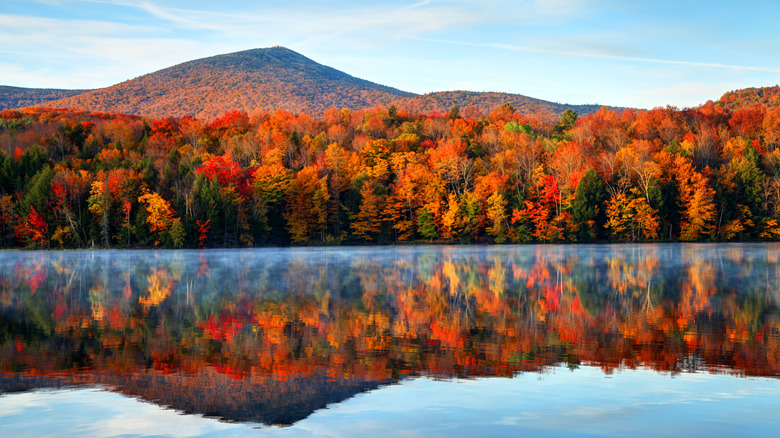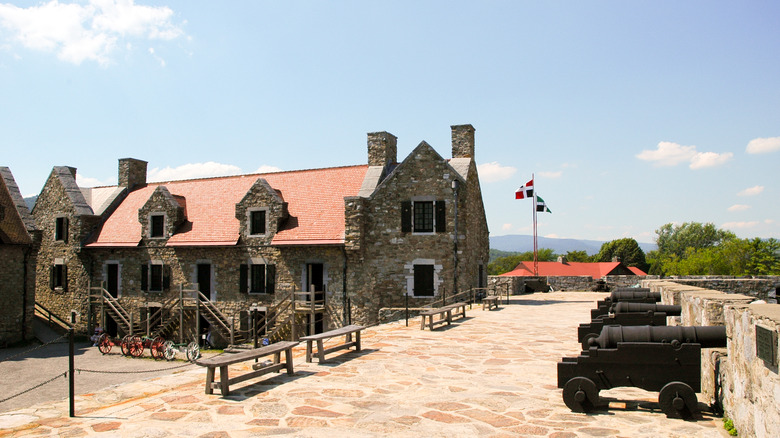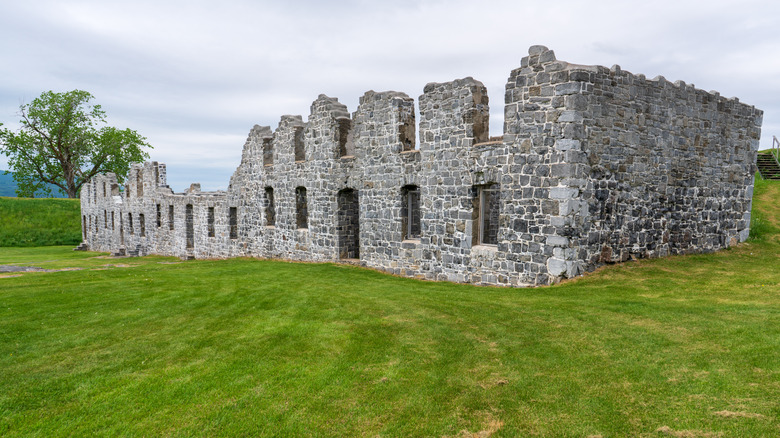This Incredible East Coast Lakeside Destination Is A Must-Visit For History-Buffs
If the idea of visiting a historical lakeside destination that borders two states and another country sounds appealing, we have the perfect destination for you: Lake Champlain. The most underrated tourist attraction in Vermont, this place is rich in history, having been the site of numerous battles during the Revolutionary War and the War of 1812. It borders locations like Burlington and Plattsburgh, New York, as well as Québec, Canada.
For thousands of years, Lake Champlain has been home to the Abenaki and Mohawk peoples (part of the Iroquois Confederacy). The body of water was named after French explorer Samuel de Champlain, who first laid eyes on it in 1609 and may have been the first to spot the local lake monster known as Champ. This stunning lake and its surrounding towns were settled by the French and housed both American and British ports during the Revolutionary War. The nearby Fort Ticonderoga witnessed battles involving American hero Ethan Allen and the Green Mountain Boys, as well as American traitor Benedict Arnold. If you're a fan of early American history, a visit to any of the towns around this lake is a must.
The rich past of the Lake Champlain area
The Mohawk and Abenaki people have inhabited the Lake Champlain area for approximately 11,000 years. In 1609, French explorer Samuel de Champlain arrived at the lake while exploring the St. Lawrence region. He mapped parts of northeastern Canada and the Great Lakes and established the city of Québec in 1608, which attracted French settlers. In 1758, the Battle of Ticonderoga (formerly Fort Carillon) took place, marking one of the bloodiest battles of the French and Indian War. The British troops were initially defeated but recaptured the fort the following year. Ethan Allen, the first leader of the Green Mountain Boys militia and the founder of Vermont, emerged as one of the American heroes of this war. You can visit his homestead in Burlington, which also offers tours of an Abenaki village.
During the American Revolution in 1776, America engaged in its first naval battle against the British at Lake Champlain's Valcour Island. Benedict Arnold, who would later betray the American forces, led the Americans and suffered defeat. However, this battle delayed the British advance, giving the Americans more time to gather their forces. In the War of 1812, a naval battle near Plattsburgh, New York, in the lake's Cumberland Bay resulted in a swift American victory against the British invasion of the state. In 1823, the Gleaner became the first vessel to pass through the Champlain Canal, which served as a prototype for the more famous Erie Canal.
Champ, the Lake Champlain monster
America's version of Scotland's Loch Ness monster lives in Lake Champlain, according to legend. "Champ," as she's called, has a history at the lake, where the Abenaki and Iroquois people have legends of a lake denizen that has been described as a horned serpent or giant snake. The Abenaki called it a Gitaskog.
The first "modern" sighting reportedly came from Samuel de Champlain. Accounts vary as to where he saw what he saw, but he described it as being around five feet long with a big head and a double row of teeth. It's often thought to be a garfish, which live in Lake Champlain. Was Champ just a big one? A monster? A dinosaur? Champ has apparently been sighted frequently since. One early sighting described her as a monster around 187 feet long with a seahorse head. 1873 boasted a number of large serpent sightings. P.T. Barnum, the famous showman, offered a $50,000 prize in 1873 for its skin for his World's Fair Show.
Champ was reportedly seen by multiple people in 1945 from the deck of the S.S. Ticonderoga. Pictures have been taken, but like most images associated with cryptozoology, they're pretty blurry. Legend or not, if you do see her, don't mess with Champ. Port Henry, New York declared the water a safe haven for her in 1981, with Vermont voting to protect her in 1982, and the New York State Assembly and Senate also passing protection resolutions.
What to do and see in the region
If you're a history buff, you should definitely visit Fort Ticonderoga in NY. There, you can witness weapons demonstrations and battle re-enactments, take museum tours and boat tours, and even hike around the 2,000-acre property. On the New York side, you can explore the Crown Point historical site, which features a museum and grounds where you can take a nature walk and learn about the history of Fort St. Frederic, built by the French in the early 18th century. The British later replaced it and built the largest British stronghold on the continent. You can also explore the ruins' barracks and the fort walls and even visit the Crown Point Lighthouse built in 1858. Across the Lake Champlain Bridge, you have the option to visit the Chimney Point State History Site and learn about the Western Abenaki people.
In lakeside towns like Keeseville, Port Henry, Westport, and Essex, you can take walking tours. Don't miss the opportunity to visit the USS Monitor, the very first ironclad warship commissioned for America during the Civil War. It played a famous role in the battle with the Confederate CSS Virginia. You can also tour the Sugar Hill Manor, once the home of Colonel Elmer J. Barker, which now operates as a bed and breakfast. Additionally, you may choose to visit the Civil War History Room in Ironville, NY, and take a walking tour of the Penfield Forge Site to learn about the wrought iron production that took place there in the mid-1800s.



